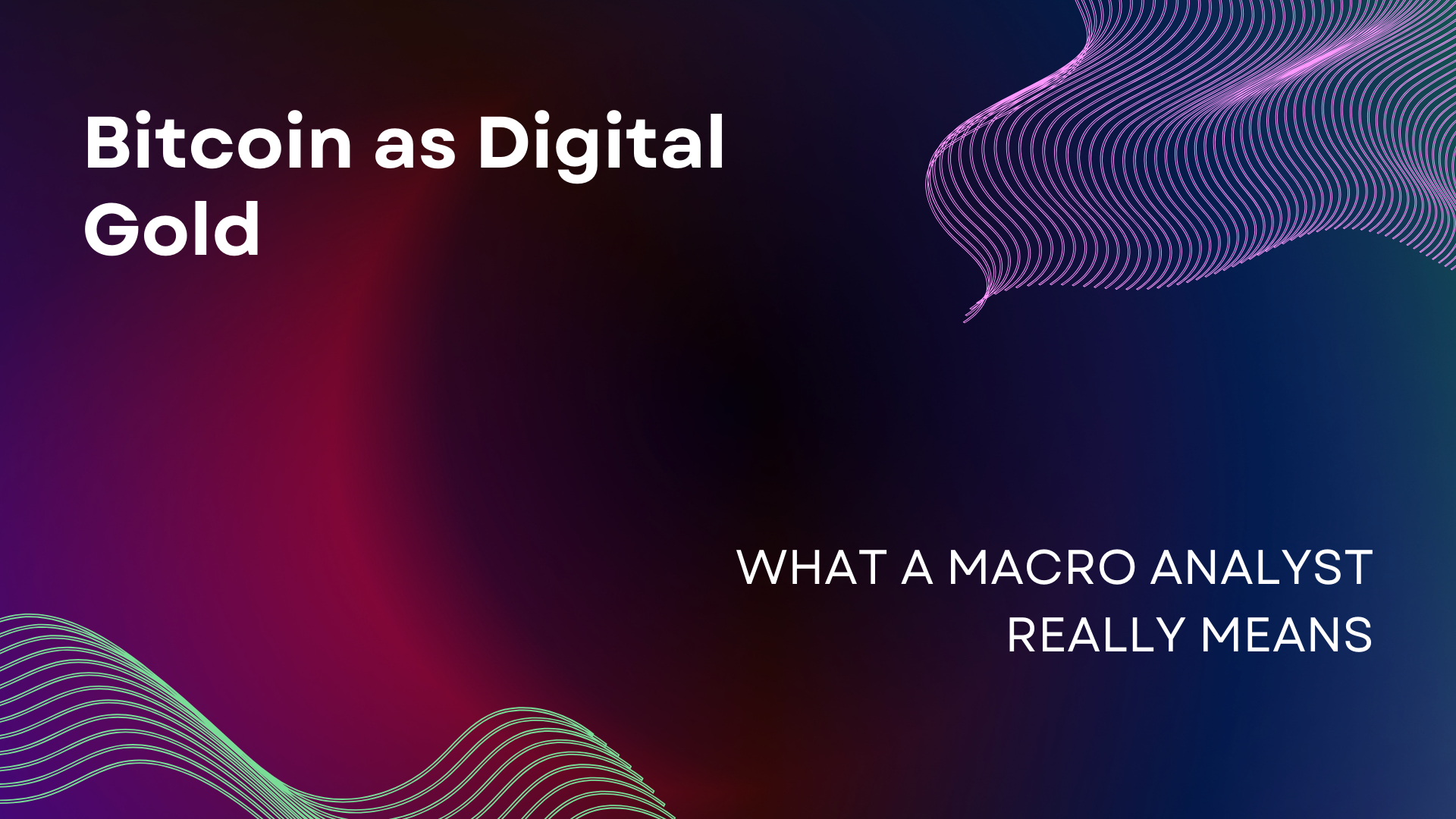
A new interview has reignited the “Bitcoin as digital gold” debate—and it hinges on something counter-intuitive: Bitcoin’s lack of yield may be a strength, not a weakness. Speaking to ForkLog, macro analyst Luke Gromen argued that Bitcoin’s value proposition is precisely its absence of counterparty risk and no built-in yield, which makes it a purer store of value for people trying to hedge inflation, capital controls, or political shocks. He went further, saying that preferring yield-bearing assets is often a sign of “Western financial privilege.”
Below is a breakdown of what he meant, how it lines up with mainstream commentary, and what to watch if you care about Bitcoin’s store-of-value narrative.
The core claim: No yield → fewer dependencies
Gromen’s point is simple: when an asset doesn’t promise yield, you aren’t trusting an issuer, borrower, or platform to pay you back. That removes counterparty risk, the risk that someone on the other side defaults or changes the rules. Gold has long played this role for savers; Bitcoin’s “digital gold” pitch applies the same logic to a programmable, borderless asset you can self-custody.
Why that matters right now: In parts of the world where bank access is limited, currencies are unstable, or capital controls are tight, an asset that no one else controls can be valuable even without a yield. That’s the philosophical core of the Bitcoin digital gold idea.
The mainstream echo: Powell’s gold comparison
This isn’t just a crypto-insider view. Federal Reserve Chair Jerome Powell has repeatedly described Bitcoin as more comparable to gold than to the dollar, emphasizing that people treat it as a speculative asset rather than money used for daily payments. His remarks—delivered at the New York Times DealBook Summit—framed Bitcoin as a competitor to gold, not to the U.S. dollar.
Powell also summarized it this way: “People use bitcoin as a speculative asset — it’s like gold; only it’s virtual, it’s digital.” While he flagged volatility and limited payment use, the comparison itself supports the “digital gold” label many investors use.
Where the critics push back
Skeptics argue that gold’s role is centuries old, while Bitcoin is barely 16 years old and still volatile. They also note that a zero-yield asset has an opportunity cost when interest rates are high. Those are fair critiques. But supporters reply that scarcity, portability, and self-custody make Bitcoin a different kind of store of value—and one that can move instantly across borders without permission. The Gromen take basically says: for people living outside stable Western financial rails, that trade-off can be rational.
Why “counterparty risk” keeps coming up
- Gold: Physical bullion avoids counterparty risk—but storing or moving it can be costly and slow.
- Securities and deposits: Offer yield, but you rely on issuers, brokers, banks, and regulation.
- Bitcoin: No issuer; you can self-custody and verify your coins. There’s no promised yield in the base asset, so there’s no borrower who can default on you.
Gromen’s view is that this last property is what makes Bitcoin attractive as “digital gold,” especially in countries facing inflation, capital controls, or unreliable banking.
The practical read-through for investors
- Yield ≠ free lunch. If you want yield on Bitcoin, you usually add new risks (lending, staking derivatives, platforms). Gromen’s argument says base-layer BTC is compelling because it doesn’t depend on those promises.
- Macro context matters. Powell’s framing—Bitcoin as gold-like, not dollar-like—suggests the market treats BTC as a store-of-value/hedge asset, not a payments coin (at least for now). That shapes how institutions might allocate to it.
- Different users, different needs. Someone in a stable, high-income country may prefer yielding assets; someone in an unstable environment may value self-custodial scarcity more. That’s the “privilege” angle Gromen highlighted.
What could move the “digital gold” story next
- Policy signals. Central-bank comments and regulations can swing sentiment. Powell’s gold comparison has already seeped into mainstream coverage, reinforcing the store-of-value frame.
- Adoption during stress. If people turn to Bitcoin during inflation spikes or capital-control events, it strengthens the hedge narrative. Gromen’s thesis is basically a bet that this continues over time.
- Volatility vs. time. If volatility keeps falling as the market broadens (ETFs, custody, corporate treasuries), Bitcoin’s case as a portfolio diversifier improves. Powell still warns it’s volatile, but the trend—if it continues—matters.
Conclusion
The “Bitcoin = digital gold” label isn’t perfect: gold has millennia of social buy-in; Bitcoin is new and moves fast. But the core idea—scarce, bearer-style asset with no counterparty—is what Gromen is pointing to. For some savers, no yield is a feature, because it removes promises that can break. For others, it’s a bug, because they prefer income and lower day-to-day volatility. The honest answer is that both views can be true for different people at different times.
If you want to follow the story without the noise, watch two things: how policymakers describe Bitcoin (do they keep comparing it to gold?) and how people actually use it when the macro picture gets rough. Those signals will tell you whether Bitcoin’s store-of-value role is expanding—or just staying a niche narrative.